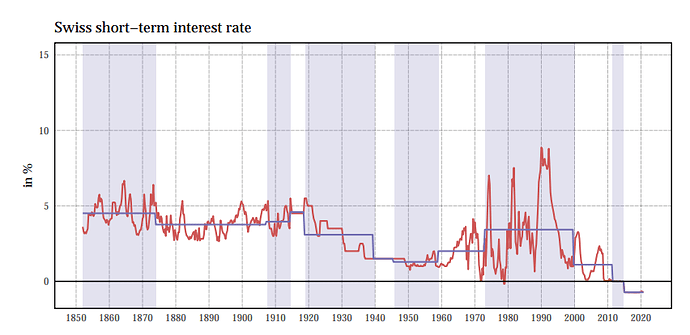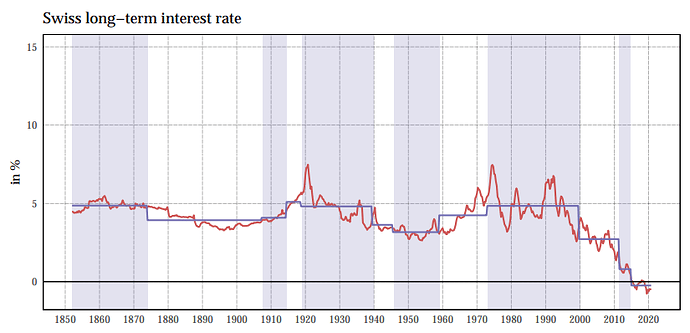First of all, THANKS to you all for your contribution.
I really appreciate the general push to reflect upon the rationale of my choices, I see this kind of contribution as extremely healthy. Overall, the feedback I received really left me a great impression of this community
So, to reiterate, I am a 27 year old guy trying to move his first steps into the market. After a (probably too) long period of research, I am committed to making my move
Thanks to you, I highlighted the following problems in my previous plan:
- I was not taking my 2nd pillar into consideration for AA
- My bond allocation was (arguably) too conservative, being 27%
- My Bond ETF of choice is not hedged to CHF, and it’s Swiss market
- Home bias too big, and I was overexposed to a small set of companies (Nestle, Roche, Novartis)
This is how I decided to tackle them:
- I was not taking my 2nd pillar into consideration
Take my 2nd pillar into consideration, and count it towards my bonds allocation. Considering the low-risk-low-return, I think the two are “similar enough” to be put in the same basket.
- My bond allocation was (arguably) too conservative, being 27%
This was based on a rule-of-thumb that is commonly suggested to beginner investors, probably as a way to mitigate volatility as one starts out, and also to stop beginners from overthinking.
Still, I am a beginner here, and although I am convinced I won’t be bothered by volatility, I can’t really say until I’ve seen it happen. This is why, even though I am decently young, I will still start with a 20% in bonds.
If, down the line, I realize that volatility isn’t bothering me at all, I will reduce it in the next couple years, to then increase the allocation as I get older.
- My Bond ETF of choice is not hedged to CHF, and it’s based on the Swiss market
My home bias is already covered in equity and, as someone pointed out in my previous post, CHF bond yields aren’t exactly great.
My solution here is to steer towards a bond ETF that covers world market and is hedged to CHF and, as someone suggested, GLAC seems to be a solid choice.
- My local bias was (arguably) too big, and I was overexposed to a small set of companies (Nestle, Roche, Novartis).
Switching from a Swiss market bond ETF to an all world one already moves the focus out of Switzerland.
That being said, as someone pointed out, the swiss market is 3% of the world market, so having 15% of my assets there is a big risk. Especially considering the big participation of a very small number of companies.
I intend to reduce my percentage of Swiss equity to 10%, and possibly even get rid of a home bias in my equity part of the portfolio in the future, if I don’t see enough value in having it
Therefore, my plan after adjusting to feedback looks like this:
Cash to invest:
- 8.900 CHF in my 2nd pillar account
- 7.000 CHF in my 3a pillar account
- 4.800 CHF in my rent deposit account
- 54.200 CHF in my bank account
[74.900 CHF total]
Target allocation:
- 10.000 CHF flat cash (emergency fund, to keep in my bank account, excluded from calculations)
- 4.800 CHF in rent deposit account (excluded from calculations: I will soon move, cash it in, and distribute it)
- Invest the remaining 60.100 CHF as follows:
- 70% of the remaining amount in world equity (composed of VT, and 61% of my 3rd pillar)
- 10% in swiss equity (compose of CHSPI, and 39% of my 3rd pillar)
- 20% of the remaining amount in world bonds (composed of GLAC, and 2nd pillar)
ETFs of choice:
- VT (total world equity)
- CHSPI (swiss equity)
- GLAC (global bond hedged ETF)
In figures:
- VT → 42.070 CHF (of which, 4.270 from my 3rd pillar)
- CHSPI → 6.010 CHF (of which, 2.730 from my 3rd pillar)
- GLAC → 12.020 CHF (of which, 8.900 from my 2nd pillar)
*my 3rd pillar is finpension 3a Global 100, which is (almost) 100% equity: 61% world and 39% local
So, once again, I ask for your opinions on this updated version of my portfolio as a beginner investor who is trying to enter the market today:)
And thank you again for your contributions, they truly are invaluable and I appreciate them immensely
![]()

